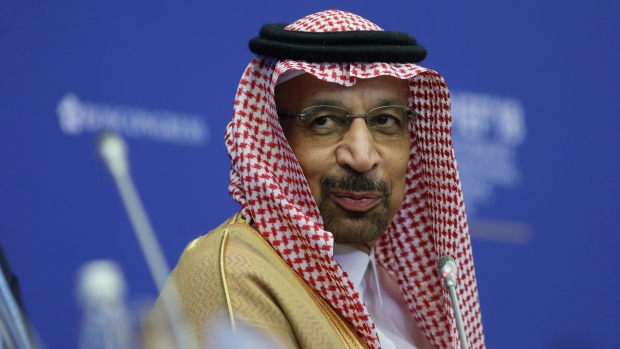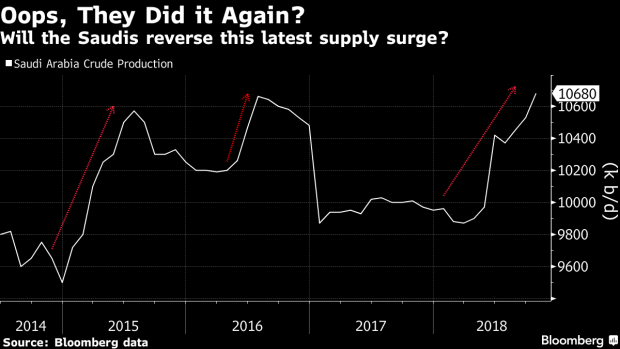Nov 12, 2018
Saudis see need for major oil supply cut as fears of a glut grow
, Bloomberg News

Saudi Arabia said OPEC and its allies should reverse about half the increase in oil output they made earlier this year as fears of shortages are supplanted by concerns about oversupply and collapsing prices.
Producers need to cut about 1 million barrels a day from October production levels, Saudi Energy Minister Khalid Al-Falih said in Abu Dhabi on Monday. The kingdom will reduce shipments by about half that amount next month, making its second policy U-turn after a summer surge in prices was followed by a swift collapse into a bear market this month.
“This announcement of at least Saudi Arabia reducing probably will firm the price,” BP Chief Executive Officer Bob Dudley said in a Bloomberg TV interview. Oil rallied as much as 2.4 per cent in London and 1.8 per cent in New York.
The largest producer in the Organization of Petroleum Exporting Countries is once again taking the lead to address huge shifts in the market. In June, it persuaded fellow producers to end 18 months of production cuts and pump more crude in response to falling output in Venezuela and Iran and pressure over prices from U.S. President Donald Trump.
This time, Saudi Arabia is urging allies to focus on the risk of rising oil inventories and forecasts for massive growth in rival supplies next year including U.S. shale. The kingdom still has some work to do persuading other major producers to follow suit, notably Russia, the largest non-OPEC nation in the alliance.
“I would not want to focus purely on production cuts,” Russian Energy Minister Alexander Novak said in a Bloomberg television interview. “We have to wait and see how the market is unfolding.”
A meeting between Novak, Al-Falih and other producers on Sunday yielded no formal change in supply policy, but did acknowledge they may need “new strategies.” Venezuelan Energy Minister Manuel Quevedo told reporters it might be worth discussing cuts to address rising oil inventories. Oman’s Oil Minister Mohammed Al-Rumhy said “there is a consensus that there is an oversupply and we need to do something.”
OPEC and Russia added almost 2 million barrels a day to the market between May and October, according to data compiled by Bloomberg. While they were willing to take that action to ease prices and shield themselves from attacks from the White House, many countries also need the value of a barrel to stay high enough to balance their budgets.
That’s no longer true for some members after oil collapsed into a bear market in New York last week, suffering its longest series of daily declines on record.
“We are going to do everything we can to keep inventories and supply demand fundamentals within a reasonably narrow band around balance, and we believe markets will calm down,” Al-Falih said in a speech at an industry event in Abu Dhabi.
The caution of some other members of the group over whether respond swiftly to the recent price collapse arises partly from the unpredictability of Iranian supply amid U.S. sanctions. The Trump administration at first insisted it would seek to curtail all of the country’s exports, only to grant waivers to eight of its customers just as the sanction look effect on Nov. 5.
That confounded a market that was anticipating stricter enforcement and a more significant reduction in Iranian exports. In addition to those doubts, the economic outlook for the year ahead, which underpins the strength of oil demand, is cloudy.
Current crude prices are still higher than a year ago, but they’re well below what Saudi Arabia needs to balance its budget. Russia, by contrast, is in a more comfortable position. Novak showed no sign he was ready to act immediately and Vagit Alekperov, the CEO of Russia’s second-largest oil producer Lukoil PJSC, said there’s no need to cut output now.
“I think it all comes down to Russia,” said Helima Croft, chief commodities strategist at RBC Capital Market LLC. “They seem to be sitting squarely on the fence about pulling the barrels back.”
--With assistance from Manus Cranny, Hussein Slim, Giovanni Prati, Sarah Forster, Javier Blas and Elena Mazneva



